A member of the Bonsai Society of San Francisco, Samuel Tan, has taken an interest in juniper bonsai – especially deadwood work. Although relatively new to bonsai, Sam has picked up good tips from books like François Jeker’s Bonsai Deadwood and Cheng Cheng-Kung’s Bonsai Shari SiDiao.
I was curious what information Sam had found most useful when getting started with carving. He didn’t hesitate: following the grain of the wood, using a chisel and pliers to peel away strands of wood, and wearing cut-proof gloves.
Sam was working on a shimpaku juniper at the time and agreed to demonstrate these techniques. Here’s the tree.
Shimpaku juniper – black ink marks future deadwood along the trunk
Carving tools
The first technique uses a chisel to deepen deadwood along the trunk.
Narrow deadwood feature created by removing the bark
Chisel
Begin by inserting the head of the chisel parallel with the grain of the wood.
Inserting the chisel into the wood
After pulling the strands of wood away from the tree, use a pair scissors to cut the separated strands.
Cutting the loose strands
From here there are two options. The loose strand can be pulled with finger and chisel or with a pair of pliers. First the finger and chisel approach.
Insert chisel under loose flap of wood
Press firmly on the flap with your thumb and pull
If you can’t pull the wood with your finger, a pair of pliers can help.
Pulling a strand of wood with pliers
Pliers are particularly useful for larger strands.
Peeling away a larger section of wood with pliers
Keep pulling to lengthen the deadwood feature
Once the deadwood feature reaches the desired length, use scissors to remove the peeled wood.
Cutting the peeled wood
Here are a couple of the deadwood features after the initial work. The next step will be to clean up the loose strands.
Jin
Jin and shari
Initial deadwood work complete
Thanks to Samuel Tan for the tips. If you can think of additional tips for new carvers, feel free to leave them below.
Subscribe to Bonsai Tonight
New Posts Delivered Every Tuesday and Friday
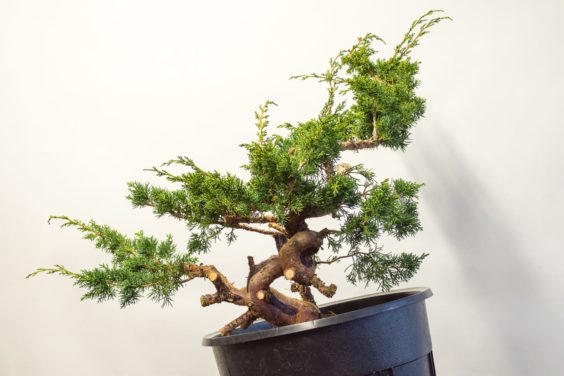
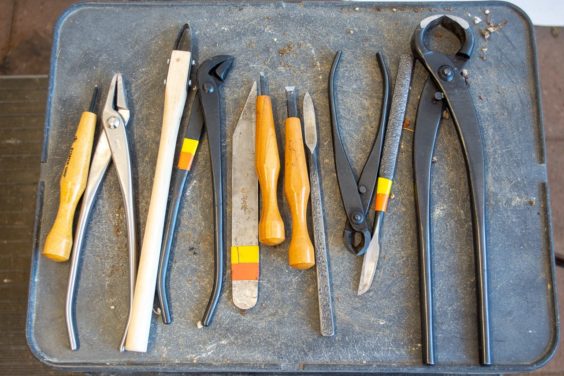
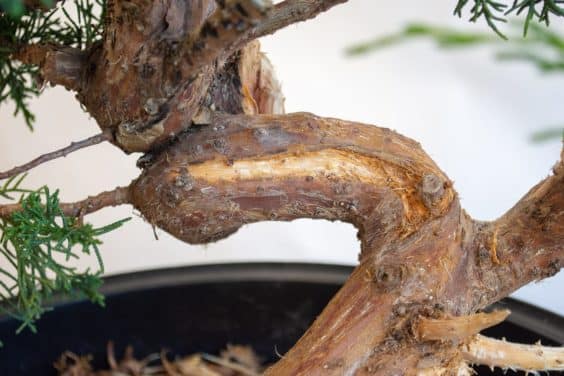
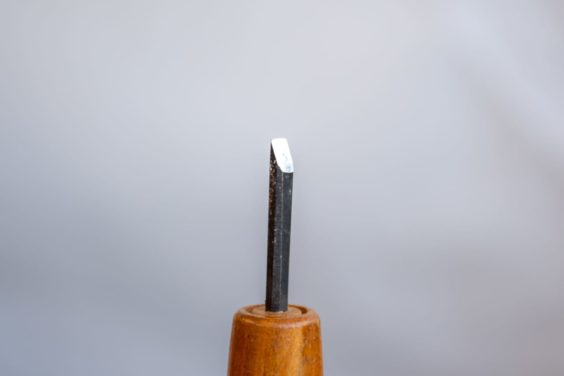
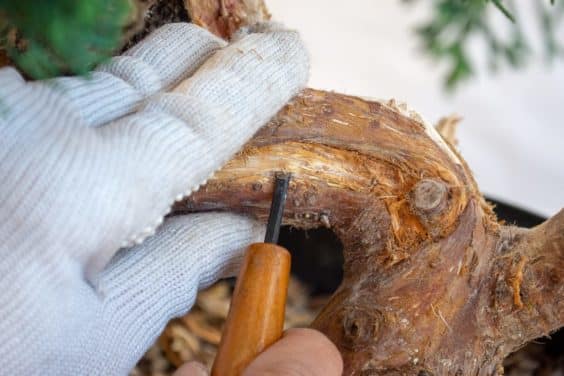
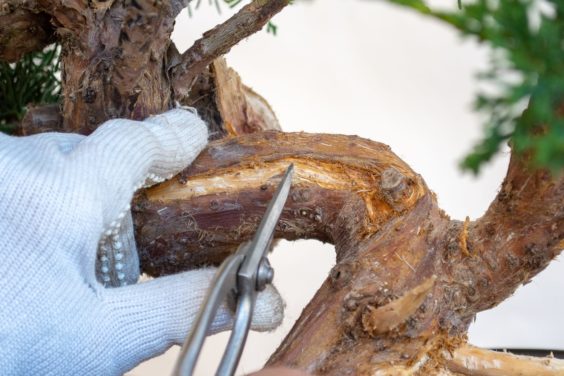
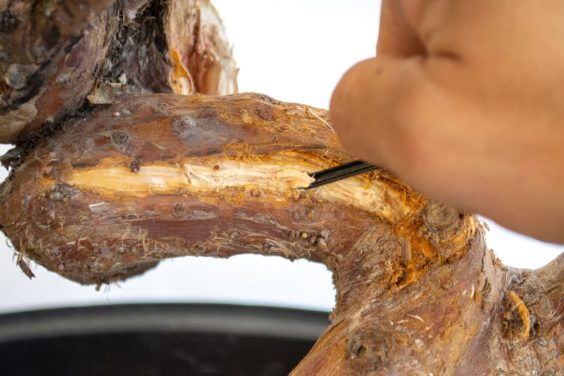
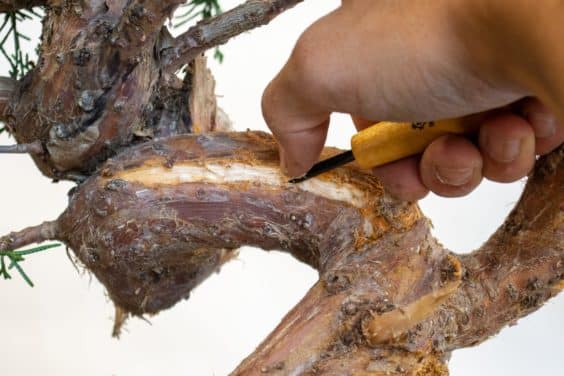
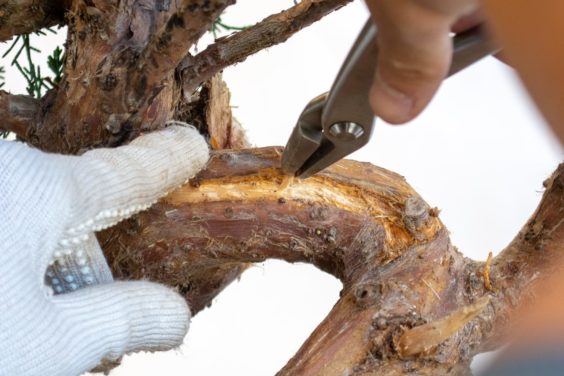
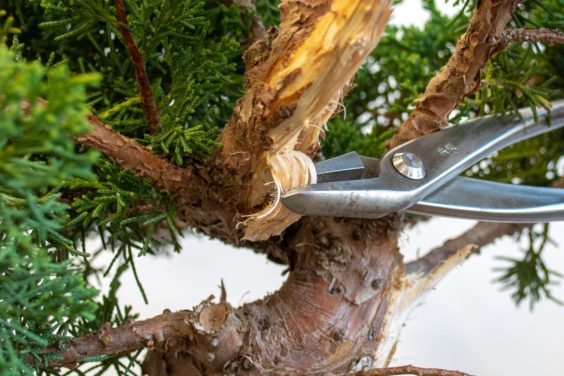
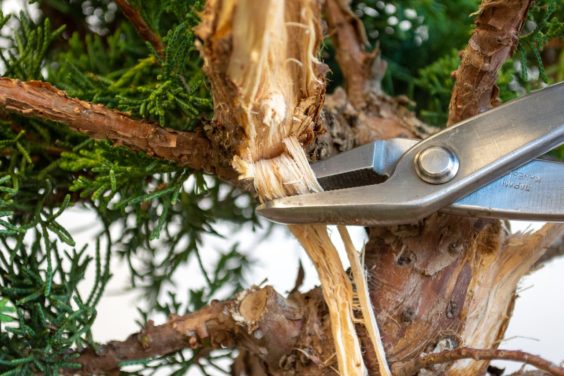
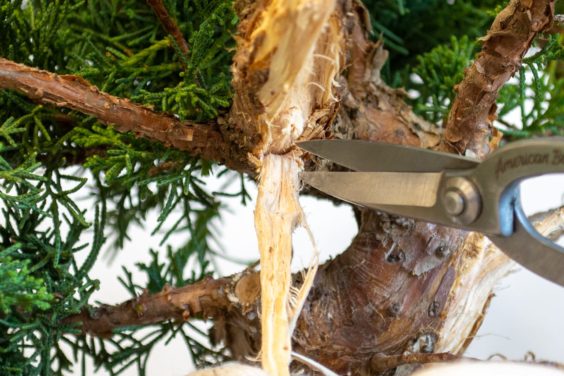
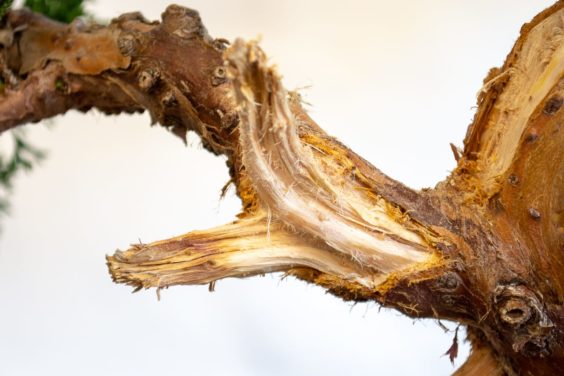
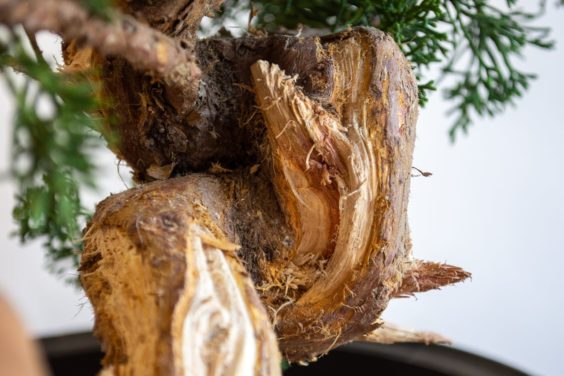
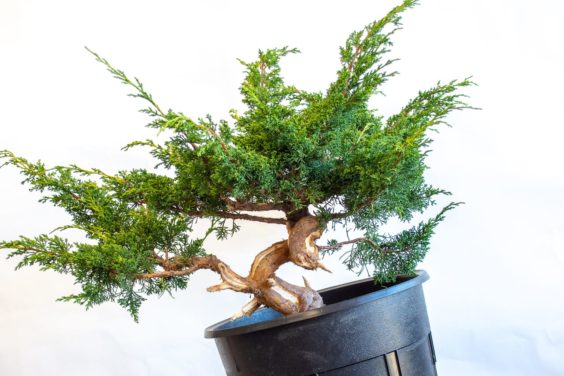
Zack Clayton says
For jin work pay atention to how that tree drops limbs in nature. Some species will die back and drop the branch in a squared off stump. Others will break and then spinter back away from the stress direction, away from the wind force or underneath from gravity. I don’t think I have ever seen a limbcome to a point like a pencil, although that seems to be a favorite for many carvers. I learned the break and rip approach from Colin Lewis. It almost always looks more realistic than any attempt to carve grain into the limb or trunk although it is best accomplished on fresh wood. I will need to look up the two books mentioned.
Jonas Dupuich says
Thanks Zack, that’s all great advice!
Alvaro Oller says
Thank you very much for this fantastic article.
If you accept the suggestion, I would be very interested to see what would be done next year on that shari.
A hug from Spain.
Jonas Dupuich says
Thanks Alvaro, I appreciate it! Will look to do an update down the road.
Janet says
I was taught to make a clean, sharp border along the edge of shari so it will heal better and the cambium will roll over a bit as it grows. Also, it’s important for the live vein to go from root base to foliage, so drawing the black marks along the bark for the soon-to-be shari requires careful attention and planning to avoid cutting off an important live vein route.
Jonas Dupuich says
Thanks Janet, I couldn’t agree more. Laying out the plan is the most important step!
Terry says
Hi Jonas, thank you for consistently sharing of your knowledge and experience in such a well illustrated manner. I must say that I had a little bit of a chuckle when I saw the photo of your carving tools. The absence of any power tools amused me. Where I am situated almost all those hand-tools would be replaced by a die-grinder with chainsaw and router bits and a Dremel.
Jonas Dupuich says
Thanks, Terry! Power tools are great – Sam has a set as well. One of the ideas behind using manual tools for this project was to learn as much as possible about how the wood grain worked and to see how the tree looked by working almost exclusively with the grain. Will try to share similar tips for powered approaches before long.
Dave Dierking says
In cleaning up the fine strands that are left afterwards. Have you ever used a lighter or torch to remove these? Or, what is recommended?
Jonas Dupuich says
Hi Dave – yes, a torch can be used to burn away the fine strands. If taking this approach, care must be taken to protect the live veins from burning or getting too hot. Other options include using a Dremel with sandpaper bit or a knife or carving tool.